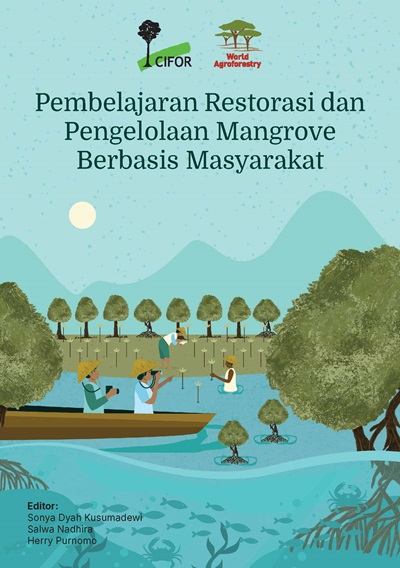The objective of this Guide is to navigate and strengthen the local capacities of anyone interested in recovering mangrove areas. This guide is intended to support the development of proposals, planning, execution and monitoring of mangrove restoration programs. It sets out, beyond specific methodologies, a strategy that includes the integration of social, economic and ecological components in the restoration process.
The strategy is presented in an orderly and standardized way in three general phases: planning, implementation and evaluation. The scope of its application includes all types of mangroves and levels of degradation, thanks to its conceptual and technical bases that consider the fundamentals of species physiognomy, the characteristics of their habitats, concepts around populations, communities, ecosystems and the landscape.
The mangrove, as an amphibious ecosystem between the sea and the land, has suffered from the impacts of both sectors. On the sea side: erosion, storms and rise in sea level; and on the coastal side: deforestation, fires and agricultural pollution that reach the mangroves.
Central America and the Caribbean are regions of the planet where there is a significant increase in the intensity and frequency of extreme weather events. Among them, hurricanes, droughts and floods, with severe effects on the stability of coastal ecosystems and their ecosystem services. The Mesoamerican and Caribbean region includes a large number of State Islands whose ecological, economic and social stability depends on the well-being of their coastal ecosystems such as mangroves, seagrasses, salt marshes and reefs. It is necessary, more than ever, to promote Nature-Based Options such as Green Infrastructure, as a way to protect the coastline and its human societies. While blue carbon ecosystems provide a large number of ecosystem services (protection, food provision, CO2 capture, wood production, habitat for biodiversity) risk reduction and reconstruction programs after extreme events, do not include their restoration.
On the other hand, the United Nations has declared 2021-2030 as the Decade of Ecological Restoration. The region has seen an increase in reef restoration, but much less effort has been seen in coastal forests, such as mangroves, salt marshes, and seagrasses (which make up blue carbon). All Latin American countries have restoration commitments under the Initiative 20x20 but mangroves and blue carbon are not included. This is a great opportunity to raise awareness of the importance of their restoration. This guide is intended to support that window of opportunity.
Download:
DOI:
https://doi.org/10.17528/cifor/008170Jumlah Kutipan Dimensi:
Tahun publikasi
2020
Penulis
Teutli Hernández, C.; Herrera-Silveira, J.A.; Cisneros-de la Cruz, D.J.; Roman-Cuesta, R.M.
Bahasa
English
Kata kunci
mangroves, ecological restoration, guidelines



















